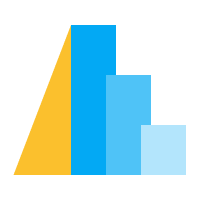Multi-Line Tooltip (Standard)#
This example shows how to add a standard tooltip to the same chart as in Multi-Line Tooltip. You can find another example using this approach in the documentation on the Pivot transformation.
import altair as alt
import pandas as pd
import numpy as np
np.random.seed(42)
columns = ["A", "B", "C"]
source = pd.DataFrame(
np.cumsum(np.random.randn(100, 3), 0).round(2),
columns=columns, index=pd.RangeIndex(100, name="x"),
)
source = source.reset_index().melt("x", var_name="category", value_name="y")
# Create a selection that chooses the nearest point & selects based on x-value
nearest = alt.selection_point(nearest=True, on="pointerover",
fields=["x"], empty=False)
# The basic line
line = alt.Chart(source).mark_line(interpolate="basis").encode(
x="x:Q",
y="y:Q",
color="category:N"
)
when_near = alt.when(nearest)
# Draw points on the line, and highlight based on selection
points = line.mark_point().encode(
opacity=when_near.then(alt.value(1)).otherwise(alt.value(0))
)
# Draw a rule at the location of the selection
rules = alt.Chart(source).transform_pivot(
"category",
value="y",
groupby=["x"]
).mark_rule(color="gray").encode(
x="x:Q",
opacity=when_near.then(alt.value(0.3)).otherwise(alt.value(0)),
tooltip=[alt.Tooltip(c, type="quantitative") for c in columns],
).add_params(nearest)
# Put the five layers into a chart and bind the data
alt.layer(
line, points, rules
).properties(
width=600, height=300
)
import altair as alt
import pandas as pd
import numpy as np
np.random.seed(42)
columns = ["A", "B", "C"]
source = pd.DataFrame(
np.cumsum(np.random.randn(100, 3), 0).round(2),
columns=columns, index=pd.RangeIndex(100, name="x"),
)
source = source.reset_index().melt("x", var_name="category", value_name="y")
# Create a selection that chooses the nearest point & selects based on x-value
nearest = alt.selection_point(nearest=True, on="pointerover",
fields=["x"], empty=False)
# The basic line
line = alt.Chart(source).mark_line(interpolate="basis").encode(
x="x:Q",
y="y:Q",
color="category:N"
)
when_near = alt.when(nearest)
# Draw points on the line, and highlight based on selection
points = line.mark_point().encode(
opacity=when_near.then(alt.value(1)).otherwise(alt.value(0))
)
# Draw a rule at the location of the selection
rules = alt.Chart(source).transform_pivot(
"category",
value="y",
groupby=["x"]
).mark_rule(color="gray").encode(
x="x:Q",
opacity=when_near.then(alt.value(0.3)).otherwise(alt.value(0)),
tooltip=[alt.Tooltip(c, type="quantitative") for c in columns],
).add_params(nearest)
# Put the five layers into a chart and bind the data
alt.layer(
line, points, rules
).properties(
width=600, height=300
)
